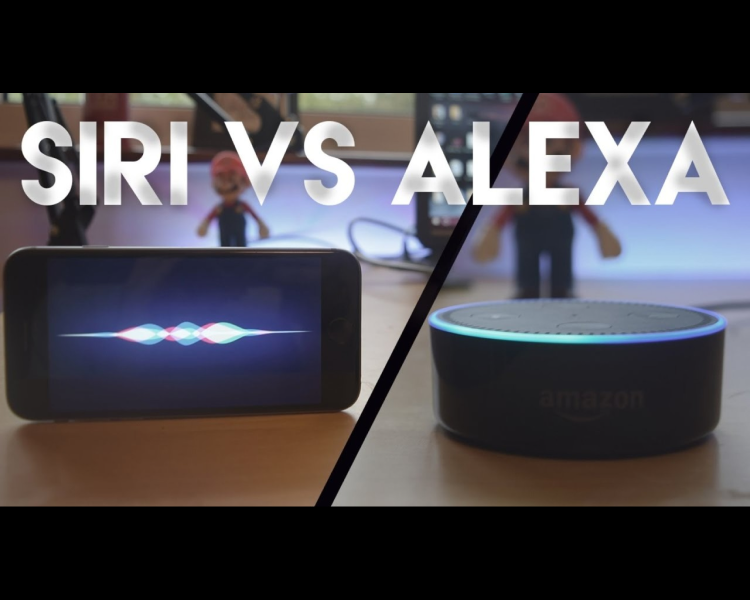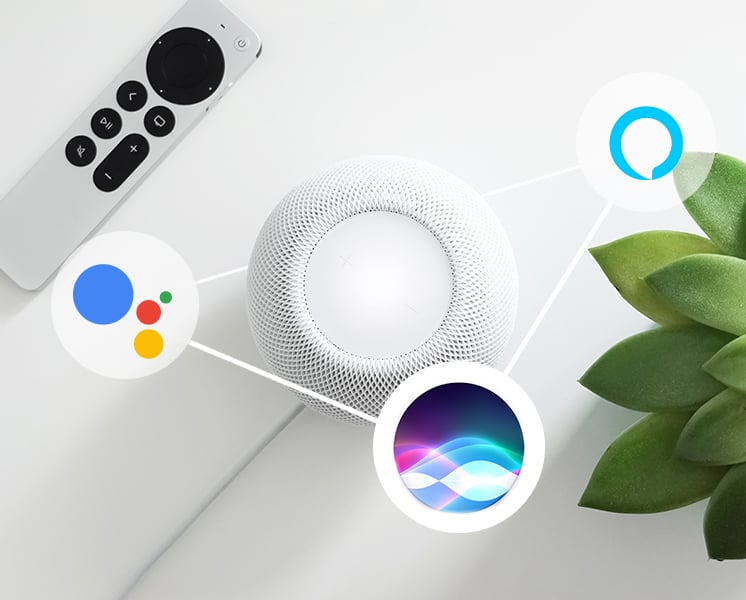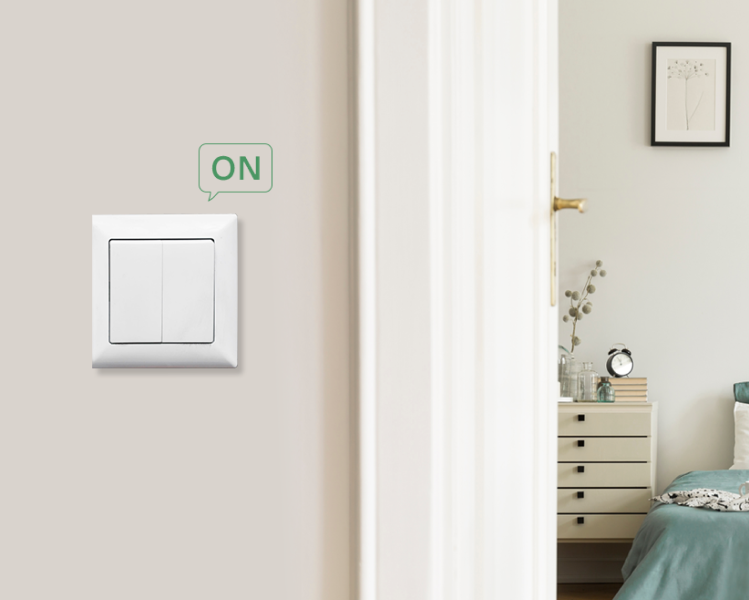In today's digital age, virtual assistants have become an integral part of our daily lives. Whether it's asking for the weather forecast, setting reminders, or playing your favorite music, virtual assistants are there to make our lives easier. Two of the most popular virtual assistants are Siri and Google Assistant, both of which are available on a wide range of devices.
However, when it comes to a Siri vs Google Assistant situation, which one would you go for?
Today, we'll compare key features of Siri and Google Assistant such as voice recognition, integration, and more to help you decide which virtual assistant best suits your needs.
Let’s find out who wins the battle!
- What is Siri?
- What is Google Assistant?
- Key Difference between Siri vs Google Assistant
- Buying guide for Siri and Google Assistant
What is Siri?
Siri is Apple's virtual assistant, first introduced in 2011 as an app for iOS and later integrated into all Apple devices. It uses natural language processing to understand and respond to user requests. It also integrates with other apps, such as Apple Music and Spotify, to play music and podcasts. Siri's voice recognition technology is designed to recognize different accents and dialects, making it easy to use for a wide range of users.
Here are some of the things you can do using Siri:
- Translation: Use Siri to translate languages
- Email: Check and manage your emails
- Sports: Get live scores and updates
- Texting: Send and receive text messages
- Weather: Get current weather conditions and forecast
- Wake-up call: Schedule alarms and wake-up calls
- Movie times: Find showtimes and purchase tickets
- Bedtime stories: Listen to bedtime stories
- Calls: Make and receive calls and initiate FaceTime
- Reminders and Calendar: Set reminders, check schedule and events
- Split a check or calculate a tip: Perform simple calculations
What is Google Assistant?
Google Assistant is a virtual assistant developed by Google that uses natural language processing and machine learning to perform tasks and answer questions for users. It is available on a wide range of devices, including Android smartphones and tablets, Google Home smart speakers, and other devices with the Google Assistant app installed.
Google Assistant uses Google's knowledge graph, which is a vast database of information, to answer questions, making it a powerful tool for users. So, is Google smarter than Siri, the answer is perhaps yes because of Google’s outstanding database.
Here’s what you can with you Google Assistant:
- Media Control: Play music and media
- Smart Home Devices: Control smart home devices
- Weather and Forecast: Check the weather and forecast
- Navigation: Give directions and navigate with Google Maps
- Information and Q&A: Get information and answer questions
- Translation: Translate languages
- Lists: Create and manage shopping and to-do lists
- App Control: Open and control apps on your device
- News and Current Events: Provide news and current events
- Calendar: Create calendar events and schedule meetings
- Chromecast and Playback Control: Control playback on your device or chromecast
- Image and Video Search: Search for images and videos
- Conversions: Give currency, measurement and time conversions
- Places and Businesses: Find nearby places and businesses
- Flight Status: Check your flight status
- Nest Devices: Control your Google Nest devices
- Google Home: Control your connected devices with Google Home
- TV and Streaming Devices: Voice control your TV or streaming devices
Key Difference between Siri and Google Assistant
Now it’s time for the Google Assistant vs Siri battle! Here are some of the key differences between the two:
Voice recognition
Voice recognition technology has come a long way in recent years, and virtual assistants have become an integral part of our daily lives. Two of the most popular virtual assistants are Siri and Google Assistant, each with its unique features and capabilities.
Siri automation, Apple's virtual assistant, uses Apple's proprietary voice recognition technology.
Google Assistant, on the other hand, uses Google's AI technology. Google has a long history of investing in artificial intelligence and machine learning, and this expertise is reflected in the capabilities of Google Assistant.
Availability
Siri HomeKit has been specifically designed to work with Apple's ecosystem, including the iPhone, iPad, and Apple Watch. Google Assistant is available on a range of devices, including Android phones, Google Home smart speakers, and other Google-enabled devices. This wide availability means that Google Assistant is accessible to a much larger audience than Siri.
Integration
Integration is a key factor when it comes to virtual assistants, and both Siri and Google Assistant offer different levels of integration with various services. Siri is deeply integrated into Apple's ecosystem, including services like Apple Music and iMessage.
This means that Siri can provide personalized recommendations based on your music preferences and can even send messages directly from your phone.
On the other hand, Google Assistant has wider integration with Google services such as Google Maps and Google Photos. This integration allows Google Assistant to provide relevant information based on your location and past activities.
Contextual Understanding
Contextual understanding is another important factor in the battle between Siri and Google Assistant. Both virtual assistants use machine learning to understand context and provide relevant information.
However, Google Assistant has a larger language model and is generally considered more capable in this area. This means that Google Assistant can understand a wider range of requests and provide more accurate information in response.
So who wins the Siri vs Google battle? Well, it depends solely on the type of user you are and your preferences. But on the whole, Google is slightly ahead because of it’s unbelievable compatibility and data driven environment.
Buying guide for Siri and Google Assistant
You can go for a range of different items while going shopping for a better AI assisted home environment. Here is a buying guide for Siri and Google Assistant you can check:
Apple HomePod Mini
Apple’s HomePod Mini is an outstanding assistant for Siri. Here’s what you can do with it:
- Siri Voice Control: Use your voice to control the HomePod mini, play music, set reminders, send messages, and more.
- High-quality Audio: Equipped with advanced audio technology, the HomePod mini delivers a rich, clear and immersive sound experience.
- HomeKit Compatibility: HomePod mini works with HomeKit, allowing you to control smart home devices such as lights, locks, and thermostats with your voice.
- Multi-room audio: Use the HomePod mini in multiple rooms for a seamless and synchronized audio experience.
- Compact Design: The HomePod mini has a compact design that fits anywhere in your home and provides powerful audio in a small package.
- Intercom: Use the HomePod mini as an intercom to communicate with other HomePod devices in your home.
- Apple Music Integration: Enjoy exclusive features and access to over 70 million songs on Apple Music, and use Siri to play your favorite music and discover new music.

Evvr Smart Energy Monitor Plug
If you’re a Siri user, Evvr’s smart energy monitor plug can be a dependable companion. Here are some of the key features you should consider:
- Compatibility: Compatible with Apple HomeKit and can be controlled with Siri voice commands.
- Energy monitoring: Monitors power usage in real-time with the Evvr App, or through Siri commands.
- Simplicity: Easy to install and set up, even for those without electrical know-how.
- Conserves energy: Energy-efficient with a magnetic retention relay that consumes 90% less energy.
- Added safety: Safe, with features such as overload protection and a tamper-proof shell.
- Unique design: Split-type design saves space and makes it easy to use in different scenarios.
- Convenience: Hands-free control with Siri, perfect for those who prefer a voice-activated solution.
- Adaptability: Can convert non-smart home appliances into smart devices, making it a versatile energy monitoring solution.
Google Nest Hub
If you’re using an Android device and Google Assistant going for a Google Nest Hub would certainly be a pertinent option. Here are some things it can perform for you:
- Voice Control: Use your voice to control the Nest Hub with Google Assistant, set reminders, play music, control smart home devices and more.
- Visual Display: The 7-inch touchscreen display provides a visual interface for controlling the Nest Hub and viewing content such as photos, videos and news.
- Smart Home Control: The Nest Hub integrates with over 10,000 smart home devices, allowing you to control lights, locks, cameras, and more with voice commands.
- Ambient EQ: The Nest Hub automatically adjusts its display to match the lighting in the room, making it less intrusive and more ambient.
- Sleep Sensing: With the built-in sleep sensing technology, the Nest Hub can track your sleep patterns and provide you with insights and recommendations for better sleep.
- Google Photos: Access your Google Photos library on the Nest Hub display, making it easy to view and share memories.
- Chromecast Built-in: Cast content from your phone or tablet to the Nest Hub, allowing you to enjoy your favorite movies, TV shows and more on the big screen.

Evvr In-Wall Relay Switch
Finally, Evvr In Wall Relay Switch can be a game changer for Google Assistant users. Here are some of the incredible features it offers:
- Always Connected, Always Online: stays connected even if wall switch is turned off, can be controlled via apps or voice commands through Google Assistant.
- No Neutral Wire Required: installation is easy and convenient, no need to rewire electrical wires
- Works with All Wall Switches: compatible with all types of conventional wall switches, toggle switches, momentary push buttons, and smart remote buttons
- Exceptionally Small: 2 Smart Switches can fit in any electrical box to support up to 4-gang panel switches
- Make Any Bulbs Smart: works with all types of regular bulbs: incandescent, halogen, fluorescent, and LED
- Hardwired 3-Way or 4-Way Control: supports control with existing wall switches, no neutral wire required, easy installation
- Convenience, Safety, and Reliability: trusted with various certificates from different regions, unique patented design eliminates safety issues and electrical leakage during installation
- Eco-Friendly: can be used to build an eco-friendly smart lighting system across a wide range of sectors
- Supports Multiple Smart Home Protocols: Zigbee 3.0, Z-Wave, and Apple HomeKit (check product page for HomeKit)
Final Thoughts
To summarize, Siri and Google Assistant are two standout virtual assistants with their own distinct strengths. Siri is designed specifically for Apple devices and integrates well with Apple services. Meanwhile, Google Assistant offers versatility and seamless integration with Google's offerings. The decision of which one to choose will depend on your individual needs and the device you use. By being aware of the main differences between Siri and Google Assistant, you can make a wise choice and fully utilize the capabilities of your virtual assistant.
Still if you want to learn more don’t hesitate to get in touch with us and we’ll provide you with the assistance required!

















